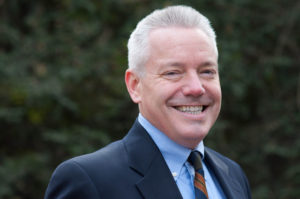 Progressive Voice is a weekly opinion column. The views and opinions expressed in the column are those of the individual authors and do not necessarily reflect the views of their organizations or ARLnow.com.
Progressive Voice is a weekly opinion column. The views and opinions expressed in the column are those of the individual authors and do not necessarily reflect the views of their organizations or ARLnow.com.
By Greg Greeley
As a community, what kind of Arlington will we get? Will we get the Arlington we want, or will we have an Arlington that just “happens?” With all the potential growth that we’re facing as a community — now more than ever — this is an important question for us.
When I was the parent of a young elementary student, I saw that our schools were getting more crowded, and I was concerned that we had no plans to build new schools despite the clearly growing enrollment. This was a real change from when I moved here in the 1980s. Back then, I remember families moving out to Fairfax for the “good” schools. Now we see many parents staying in and moving to Arlington for the good schools.
But, the change was not pre-ordained. There are still many who remember the decades when our school population was shrinking, and Arlington was discussing which schools to close — a painful process.
Today, we’re a growing community. But, the growth has been difficult. Many see the towers rising in Pentagon City and decry the density and the traffic. At the same time, few would want to go back to the desolate warehouses and empty lots that were there decades before. So again, what kind of future do we want for Arlington?
Last year, the county purchased the “Buck” site on N. Quincy Street. Some of the early proposals would have included swapping part of the site for bus parking in South Arlington. If that happened, we would have been looking at the construction of a six-story storage facility on Quincy Street. Many in our community were clear that this was not the future they wanted. I am happy that our Joint Facilities Advisory Commission (JFAC) could recommend better alternatives. Alternatives that will allow us all time to consider what we could imagine as a long-term plan for that site.
As we look into the future, it’s clear that we will need to build more schools. We will need new elementary schools, perhaps a new middle school, and certainly more seats for our high school students. So, as our schools grow, we should not just build schools where it is the fastest and easiest to build. We should use tools like JFAC to look into the long-range future and select, as a community, where the schools should go. We should look at which neighborhoods have students, but don’t have a neighborhood school. We should look at where we can put schools to help balance the diversity that so many want to achieve. And, we should look at how could we give more of our students the opportunity to walk to school.
I have been fortunate. I am the parent of a high schooler who walks to a diverse, neighborhood school. The diversity has given him a perspective on the world that he would not have otherwise seen, the proximity to school fosters a sense of community, and the ability to walk to school gives him a real feeling of independence. I hope that in the future we can provide these benefits to even more of our students in Arlington.
So, that brings us back to the question. What kind of Arlington will we get? One tool to help us plan our future is the relatively new Joint Facilities Advisory Commission. But, JFAC is only one tool, and to be effective it must be used well. As a commission, we must look into the future and help the community discuss and plan for the Arlington we want. If we don’t, we’ll get an Arlington that just happens, and that’s no guarantee of a positive future for our community.
Greg Greeley is the Vice Chair of the Joint Facilities Advisory Commission. He is a long-time resident of Arlington and has been an active parent in Arlington schools.

